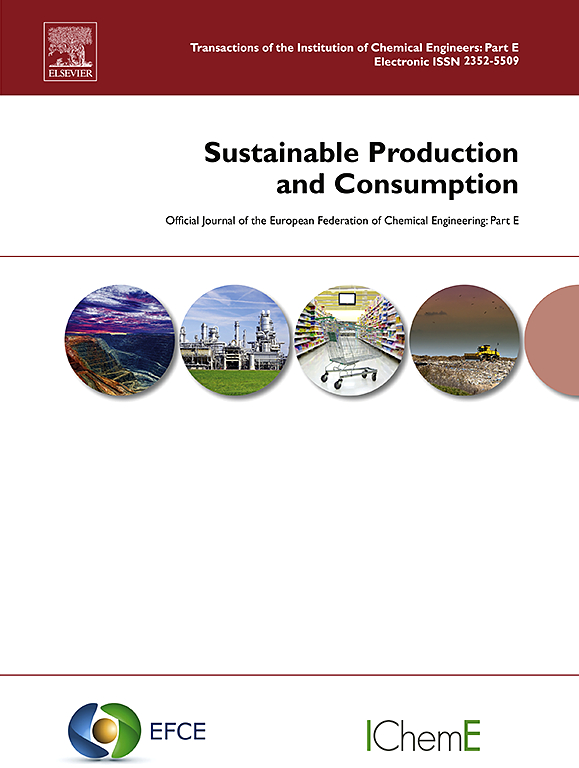Life cycle assessment of biological nutrient removal considering seasonal variations in environmental impacts
IF 10.9
1区 环境科学与生态学
Q1 ENVIRONMENTAL STUDIES
引用次数: 0
Abstract
Wastewater treatment plays a critical role in mitigating environmental impacts. However, the environmental performance of treatment processes varies depending on operational configurations and external factors such as seasonal changes. This study aimed to investigate three wastewater treatment plants (WWTPs) with different biological nutrient removal (BNR) configurations -anaerobic-anoxic-oxic (A2O), five-stage Bardenpho, and Johannesburg processes- using the life cycle assessment (LCA) approach to comparatively examine their environmental performances and to conduct an LCA study using two functional units (FUs) (1 m3 of wastewater treated and 1 kg of total nitrogen (TN) removed), revealing seasonal environmental impacts for A2O process to reveal the difference in interpretation according to the FU selected. The ReCiPe 2016 methodology was employed, focusing on ten key impact categories, including global warming, marine eutrophication, freshwater eutrophication, human carcinogenic toxicity, human non-carcinogenic toxicity, marine ecotoxicity, freshwater ecotoxicity, terrestrial ecotoxicity, terrestrial acidification, and fossil resource scarcity. The results show that the Johannesburg process achieves better environmental performance compared to the others. The superior performance of the Johannesburg process can be attributed to having no fugitive methane (CH4) emissions due to the absence of anaerobic digester in the sludge treatment and its competitive TN removal rates, which align directly with sustainability objectives like emission reduction and reducing carbon footprint. Choosing the right FU is crucial for sustainability. The FU based on 1 kg TN removed provided a more representative view of environmental efficiency under changing seasonal conditions. These findings emphasize the importance of aligning FU selection with sustainability goals. In terms of wastewater management policy, the study suggests that monitoring based on the percentage of pollutant load removed or total annual emissions generated would be more meaningful, taking into account changing external conditions such as seasonal factors.
考虑环境影响季节变化的生物营养物去除生命周期评估
废水处理在减轻环境影响方面起着关键作用。然而,处理过程的环境性能取决于操作配置和外部因素,如季节变化。本研究旨在研究三个具有不同生物营养物去除(BNR)配置的污水处理厂(WWTPs) -厌氧-缺氧-缺氧(A2O),五阶段Bardenpho和约翰内斯堡工艺-使用生命周期评估(LCA)方法来比较其环境性能,并使用两个功能单元(FUs) (1 m3处理废水和1 kg总氮(TN)去除)进行LCA研究。揭示季节环境对A2O过程的影响,揭示根据所选FU的解释差异。采用ReCiPe 2016方法,重点关注全球变暖、海洋富营养化、淡水富营养化、人类致癌毒性、人类非致癌毒性、海洋生态毒性、淡水生态毒性、陆地生态毒性、陆地酸化和化石资源稀缺等10个关键影响类别。结果表明,与其他工艺相比,约翰内斯堡工艺取得了更好的环境绩效。约翰内斯堡工艺的优越性能可归因于污泥处理中没有厌氧消化池,没有逸散性甲烷(CH4)排放,其具有竞争力的TN去除率,这直接符合减排和减少碳足迹等可持续发展目标。选择合适的FU对可持续发展至关重要。傅基于1公斤TN去除提供了一个更具代表性的季节性变化条件下环境效率。这些发现强调了使FU选择与可持续发展目标保持一致的重要性。在废水管理政策方面,该研究建议,考虑到季节性因素等不断变化的外部条件,基于污染物负荷去除的百分比或产生的年总排放量进行监测将更有意义。
本文章由计算机程序翻译,如有差异,请以英文原文为准。
求助全文
约1分钟内获得全文
求助全文
来源期刊

Sustainable Production and Consumption
Environmental Science-Environmental Engineering
CiteScore
17.40
自引率
7.40%
发文量
389
审稿时长
13 days
期刊介绍:
Sustainable production and consumption refers to the production and utilization of goods and services in a way that benefits society, is economically viable, and has minimal environmental impact throughout its entire lifespan. Our journal is dedicated to publishing top-notch interdisciplinary research and practical studies in this emerging field. We take a distinctive approach by examining the interplay between technology, consumption patterns, and policy to identify sustainable solutions for both production and consumption systems.
 求助内容:
求助内容: 应助结果提醒方式:
应助结果提醒方式:


